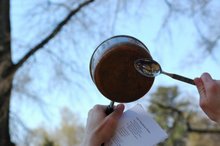An article written by NY Daily news sports writer, Christian Red, was rendered irrelevant within days of its appearance by the news first reported by
Stuart Taylor and then later by
Joseph Neff and
William West that testing for date rape drugs was indeed conducted in the Duke Hoax. While we
incorrectly speculated earlier that the testing must have been of the blood or urine variety, it appears that the testing was conducted by hair analysis instead. It appears that we are guilty of falsely assuming that Nifong was hiding the existence of this testing from as far back as March 14. His deception apparently did not begin until April 27 when Sgt. Gottlieb began shopping for a Laboratory to conduct the test.
Both the Neff and West articles we refer to seem to suggest that this testing may be unreliable due to the short duration of date rape drugs in a person’s system:
Neff:
"Laboratory testing of hair has been commonly used to detect cocaine, marijuana, heroin, amphetamines and PCP. However, it is unclear whether hair tests can detect date rape drugs such as Rohypnol or GHB. According to the U.S. Department of Health and Human Services, Rohypnol stays in the body for several hours and can be detected in the urine up to 72 hours after ingestion, and GHB leaves the body in 12 hours.”
West:
“Forensic consultant Shannon Miller, also a physician and associate professor of psychiatry at Wright State University in Ohio, said conducting date-rape drug testing is standard procedure. Negative results, he said, don't necessarily mean no substances were used. That's because some drugs can wash out of the body quickly, he said, also citing the importance of the timing of the test. But Miller said the bottom line is that the defense can reach back and cover a fair chunk of time and say, "Look, there were no drugs there."
West also apparently attempts to use the statements of “renowned medical authority”, Kroger’s Security Guard Angel Altmon, to dispute the scientific results of the hair analysis:
“One of the security guards, Angel Altmon, told The Herald-Sun that when she called police, she told the dispatcher the woman was sitting in a car and was "intoxicated, drunk or something." "Somebody must have slipped her something, because she wasn't drunk," Altmon told the newspaper. "If she was drunk, I would have smelled something."
It should be noted that the accuser’s own admission contradicts Altmon’s expert sniff analysis. The accuser claimed that she willingly consumed somewhere between one beer, two beers and lots of alcohol, to the point that she was “drunk and did not feel pain” depending on which version a person chooses to believe.
While it is uncertain whether Ms. Altmon’s nose will be qualified as an “expert” for trial testimony, an article published by the
United States Department of Justice seems to indicate that hair analysis, as far back as 1995, has been used to detect the presence of drugs for as long as 60 days after ingestion. A DOJ article written by Tom Mieczkowski, Ph.D. indicates that:
Testing hair samples for drugs of abuse may offer certain advantages over urinetesting methodologies. Drugs and drug metabolites remain sequestered in the hair shaft indefinitely, thus providing detection during a much larger “window”(approximately 60 days of use can be seen in one inch of hair) than druglevels in urine, which decrease rapidly, through excretion, over a short period oftime (generally within 48 to 72 hours).
In August of 2003, another study funded by the DOJ and conducted by
Adam Negrusz, Ph.D. and others at The university of Illinios at Chicago, concluded that several date rape drugs were detectable by hair analysis for at least one month following ingestion. According to this study:
The concentrations of 7-aminoflunitrazepam in hair are much higher than concentrations of the parent drug, flunitrazepam. The metabolite remains in hair for at least one month after administration of a single dose of Rohypnol®. There is no correlation between dose of Rohypnol® and concentration of both compounds in hair. We conclude that the 7-aminoclonazepam is being deposited in hair in much higher quantities than the parent drug and remains there for extended periods of time. The new technology allows to detect the other compounds such as diazepam, alprazolam, triazolam, and ketamine in hair in very low concentrations.
A third study conducted by the Institut de Medecine Legale in France was led by Dr. Pascal Kintz in 2003. The findings of this study are cited by
PubMed.gov , a service of National Library of Medicine and the National Institutes of Health. One conclusion of note is:
This study demonstrates that a single exposure to GHB in a case of sexual assault can be documented by hair analysis when collected about one month after the crime.
It should be noted that the important date is when the hair sample was collected and not when it was tested. While the testing was conducted after April 27, it is possible the hair sample was collected earlier.
In his article, Mr. Red apparently attempts to further the illusion of the possibility of a date rape drug by noting that both dancers were given mixed drinks shortly after arrival. Mr. Red fails to disclose, however, that Ms. Roberts, the second dancer, in her written police statement reports that the accuser spilled her drink in the sink after taking a sip. Mr. Red also fails to note that Ms. Roberts suffered no ill effects from sipping her mixed drink. Mr. Red further clouds the truth by offering expert descriptions of the devastating effects of date drugs.
“You can pretty much incapacitate almost anyone with a handful of pharmaceutical drugs," said Doug Scott, a former police lieutenant who worked 18 years in nearby Cary, N.C., and who now trains state health care professionals and law enforcement officers on the dangers of drugs like GHB. "And I'm really surprised that we haven't been hearing more about the possibility that this woman may have been impaired by some covertly administered drug. I went through the time line (of the case) and it really looks like (the victim) was impaired fast."
Mr. Red does prove himself handy, even if it appears his intention was otherwise, as he offers confirmation that date rape drugs including GHB could be detected via hair analysis.
"GHB gets incorporated in protein that is called keratin that makes hair. As long as you don't cut the hair, you will have GHB there," Dr. Nikolas Lemos, the chief forensic toxicologist at the San Francisco office of the chief medical examiner, said in a recent interview.
Toxicology Associates Inc. also suggests that hair is an excellent specimen for detection of drugs and mentions on its website that one of the greatest advantages is that hair analysis offers a 0% change of false positives and false negatives and can be reanalyzed with the re-collection of additional samples. TAI indicates that detection can be accomplished with samples taken at least as far removed as 10 months from the date of ingestion. TAI suggests further that the time frame for collection is dependant on the length of the hair and that this methodology may also be used to detect alcohol abuse.
(We are uncertain whether Baldo breathed a sigh of relief when learning that hair analysis was the preferred method of drug and alcohol detection in consideration of relative absence of hair on his head.)
Toxicology Associates Inc. is the lab that provided hair analysis for former Nebraska and current Ohio University football head coach Frank Solich who tried to defend his November 2005 DUI charge by claiming he was drugged with GHB. The aforementioned Christian Red wrote an article that calls into question TAI’s results on hair testing of Coach Solich, but offered further substantiation of the ability of hair analysis to detect a
single instance of GHB ingestion:
"In order for you to be able to interpret the spike (in GHB levels), you need to take the hair shaft, cut it in small segments and then analyze each segment for GHB," he [Dr. Nikolas Lemos, chief forensic toxicologist at the San Francisco office of the chief medical examiner, whose lab is equipped to test hair samples for GHB] says. "You will be able to see a spike. That's how you interpret if somebody was given GHB, rather than GHB that is present in the body by its nature.”
It appears that despite the scientific hair analysis conducted in the Duke Hoax, journalists and Nifongists alike accidentally or intentionally continue to make the results of this test another example of forcing the accused and their defense team to
prove the negative when questioning the reliability of the results of the hair analysis by way of offering:
sniff test “expert” Ms. Altmon
suggestions that traces of date rape drugs wash out of the system [an argument applicable to urine and blood tests and not hair analysis]
descriptions of the effects of date rape drugs
suggestions that “it is unclear whether hair tests can detect date rape drugs such as Rohypnol or GHB” when there have been multiple studies that demonstrate it is possible
failure to note that there are laboratories that specifically conduct testing of hair for drugs
failure to note that the accuser admits voluntarily drinking alcohol that night
The media continues to promote the possibility that a date rape drug was used despite the information that scientific testing has proven otherwise. It is another example of the upside down world, where the accused must prove that they did not do it and couldn’t have done, over and over again.
Hat tip: K H and KRDDURHAM














































5 comments:
Outstandingwork, Liestoppers!
“The fact that a victim provides the police with information of an alleged crime does not, without more, constitute probable cause. Rather, the officer has a duty to assess the reliability of the victim and, if circumstances call into doubt the victim’s veracity, to investigate the allegations and corroborate them…Defendants further argue that Plaintiff’s indictment by a grand jury precludes a claim for false arrest, as it creates a presumption of probable cause. While a grand jury indictment does create a presumption of probable cause…it is rebuttable ‘by evidence that the indictment was the product of fraud, perjury, the suppression of evidence by the police or other police conduct undertaken in bad faith.’…”
Jovanovic v. City of New York, et al., opinion filed August 17, 2006, at 11-13 (SDNY)
I am very thankful for this information. After an incident in which this drug could of been facilitated, the victim may experience the rollercoaster of emotions & confusion ; & may not have the mindset available to make the timely decisions to have urine checked within the 72 hour period. Also, the victim may not realize until later that the drug may have been given . So.. it's great to have the technology to possibly offer some real answers,& to have the opportunity to get to a truth of a situation whether tests results return possitive or negative. I wasn't sure if such testing could determine any presence of " date rape drugs"; So I am pleased to know that it is an avenue worth exploring. Many Thanks .
I am very thankful for this information. After an incident in which this drug could of been facilitated, the victim may experience the rollercoaster of emotions & confusion ; & may not have the mindset available to make the timely decisions to have urine checked within the 72 hour period. Also, the victim may not realize until later that the drug may have been given . So.. it's great to have the technology to possibly offer some real answers,& to have the opportunity to get to a truth of a situation whether tests results return possitive or negative. I wasn't sure if such testing could determine any presence of " date rape drugs"; So I am pleased to know that it is an avenue worth exploring. Many Thanks .
An excellent site.
On May 15th 2004, I was raped. Because of the nature of the drug(s) used, I suffered great confusion and only when I statred having terrifying flashbacks to the event, did I contact the police.
I have to say , in every day life police officers take such hard knocks, but I can categorically state that I was never, ever disbelieved - EVER!
Bacause of the time it took me to realised I'd be raped (by not 1 man, but a gang) I'd already washed away any significant evidence. It also happened in a hotel where they housekeeping was award-winng, thus leaving no dna evidence.
Had it not been for hair sampling I would never had my day in court. A significant number of drugs were found in my hair (unfortunately I was never party to what these were given the seriousness of the court case).
In this instance I was 'lucky' that an eagle-eyed cop doing her job and believing in me suggested hair analysis. I also am fortunate that I have very, very long thich hair which I understand is key to testing. Not for the faint-hearted ; the sample was large and left me with a huge stump of my becatiful hair (thankfully easier to cover up.)
Just thought I'd discuss my experience. I think it's despicable it's not used more in rape cases.
For the record, this was in the UK and the man in question got a 'Life' sentence.
My heart goes out to each and every one of the men and women raped every day.......peace be with you and good luck!
Anon
Post a Comment